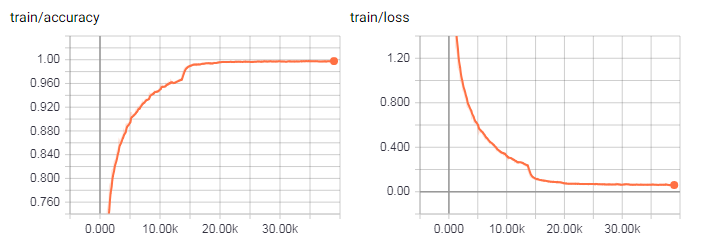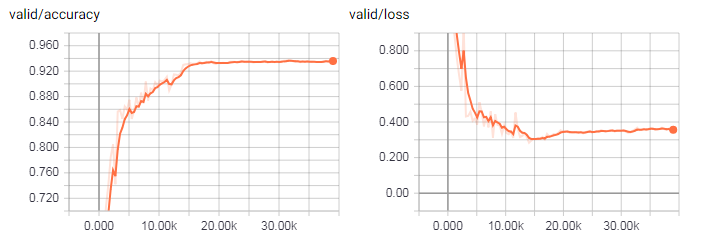- TensorFlow implementation of Going Deeper with Convolutions (CVPR'15).
- This repository contains the examples of natural image classification using pre-trained model as well as training a Inception network from scratch on CIFAR-10 dataset (93.64% accuracy on testing set). The pre-trained model on CIFAR-10 can be download from here.
- Architecture of GoogLeNet from the paper:

- Python 3.3+
- TensorFlow 1.9+
- Numpy
- Scipy
- The GoogLeNet model is defined in
src/nets/googlenet.py. - Inception module is defined in
src/models/inception_module.py. - An example of image classification using pre-trained model is in
examples/inception_pretrained.py. - An example of train a network from scratch on CIFAR-10 is in
examples/inception_cifar.py.
For testing the pre-trained model
- Images are rescaled so that the smallest side equals 224 before fed into the model. This is not the same as the original paper which is an ensemble of 7 similar models using 144 224x224 crops per image for testing. So the performance will not be as good as the original paper.
For training from scratch on CIFAR-10
- All the LRN layers are removed from the convolutional layers.
- Batch normalization and ReLU activation are used in all the convolutional layers including the layers in Inception structure except the output layer.
- Two auxiliary classifiers are used as mentioned in the paper, though 512 instead of 1024 hidden units are used in the two fully connected layers to reduce the computation. However, I found the results are almost the same on CIFAR-10 with and without auxiliary classifiers.
- Since the 32 x 32 images are down-sampled to 1 x 1 before fed into
inception_5a, this makes the multi-scale structure of inception layers less useful and harm the performance (around 80% accuracy). To make full use of the multi-scale structures, the stride of the first convolutional layer is reduced to 1 and the first two max pooling layers are removed. The the feature map (32 x 32 x channels) will have almost the same size as described in table 1 (28 x 28 x channel) in the paper before fed intoinception_3a. I have also tried only reduce the stride or only remove one max pooling layer. But I found the current setting provides the best performance on the testing set. - During training, dropout with keep probability 0.4 is applied to two fully connected layers and weight decay with 5e-4 is used as well.
- The network is trained through Adam optimizer. Batch size is 128. The initial learning rate is 1e-3, decays to 1e-4 after 30 epochs, and finally decays to 1e-5 after 50 epochs.
- Each color channel of the input images are subtracted by the mean value computed from the training set.
<<<<<<< HEAD
Download the pre-trained parameters here. This is original from here.
All directories are setup in example/setup_env.py.
PARA_DIRis the path of the pre-trained model.SAVE_DIRis the directory to save graph summary for tensorboard.DATA_DIRis the directory to put testing images.
=======
8b3f57700b6e08b9a2b11efc032ce65e195605da
- Download the pre-trained parameters here. This is original from here.
- Setup path in
examples/inception_pretrained.py:PRETRINED_PATHis the path for pre-trained model.DATA_PATHis the path to put testing images.
Go to examples/ and put test image in folder DATA_PATH, then run the script:
python inception_pretrained.py --im_name PART-OF-IMAGE-NAME
--im_nameis the option for image names you want to test. If the testing images are allpngfiles, this can bepng. The default setting is.jpg.- The output will be the top-5 class labels and probabilities.
- Download CIFAR-10 dataset from here
- Setup path in
examples/inception_cifar.py:DATA_PATHis the path to put CIFAR-10.SAVE_PATHis the path to save or load summary file and trained model.
Go to examples/ and run the script:
python inception_cifar.py --train --lr LEARNING-RATE --bsize BATCH-SIZE --keep_prob KEEP-PROB-OF-DROPOUT
--maxepoch MAX-TRAINING-EPOCH
- Summary and model will be saved in
SAVE_PATH. One pre-trained model on CIFAR-10 can be downloaded from here.
Go to examples/ and put the pre-trained model in SAVE_PATH. Then run the script:
python inception_cifar.py --eval --load PRE-TRAINED-MODEL-ID
- The pre-trained ID is epoch ID shown in the save modeled file name. The default value is
99, which indicates the one I uploaded. - The output will be the accuracy of training and testing set.
- Top five predictions are shown. The probabilities are shown keeping two decimal places. Note that the pre-trained model are trained on ImageNet.
- Result of VGG19 for the same images can be found here. The pre-processing of images for both experiments are the same.
| Data Source | Image | Result |
|---|---|---|
| COCO |  |
1: probability: 1.00, label: brown bear, bruin, Ursus arctos 2: probability: 0.00, label: ice bear, polar bear 3: probability: 0.00, label: hyena, hyaena 4: probability: 0.00, label: chow, chow chow 5: probability: 0.00, label: American black bear, black bear |
| COCO |  |
1: probability: 0.79, label: street sign 2: probability: 0.06, label: traffic light, traffic signal, stoplight 3: probability: 0.03, label: parking meter 4: probability: 0.02, label: mailbox, letter box 5: probability: 0.01, label: balloon |
| COCO |  |
1: probability: 0.94, label: trolleybus, trolley coach 2: probability: 0.05, label: passenger car, coach, carriage 3: probability: 0.00, label: fire engine, fire truck 4: probability: 0.00, label: streetcar, tram, tramcar, trolley 5: probability: 0.00, label: minibus |
| COCO |  |
1: probability: 0.35, label: burrito 2: probability: 0.17, label: potpie 3: probability: 0.14, label: mashed potato 4: probability: 0.10, label: plate 5: probability: 0.03, label: pizza, pizza pie |
| ImageNet |  |
1: probability: 1.00, label: goldfish, Carassius auratus 2: probability: 0.00, label: rock beauty, Holocanthus tricolor 3: probability: 0.00, label: puffer, pufferfish, blowfish, globefish 4: probability: 0.00, label: tench, Tinca tinca 5: probability: 0.00, label: anemone fish |
| Self Collection |  |
1: probability: 0.32, label: Egyptian cat 2: probability: 0.30, label: tabby, tabby cat 3: probability: 0.05, label: tiger cat 4: probability: 0.02, label: mouse, computer mouse 5: probability: 0.02, label: paper towel |
| Self Collection | 1: probability: 1.00, label: streetcar, tram, tramcar, trolley, trolley car 2: probability: 0.00, label: passenger car, coach, carriage 3: probability: 0.00, label: trolleybus, trolley coach, trackless trolley 4: probability: 0.00, label: electric locomotive 5: probability: 0.00, label: freight car |
- Here is a similar experiment using VGG19.
learning curve for training set
learning curve for testing set
- The accuracy on testing set is 93.64% around 100 epochs. We can observe the slightly over-fitting behavior at the end of training.
Qian Ge

